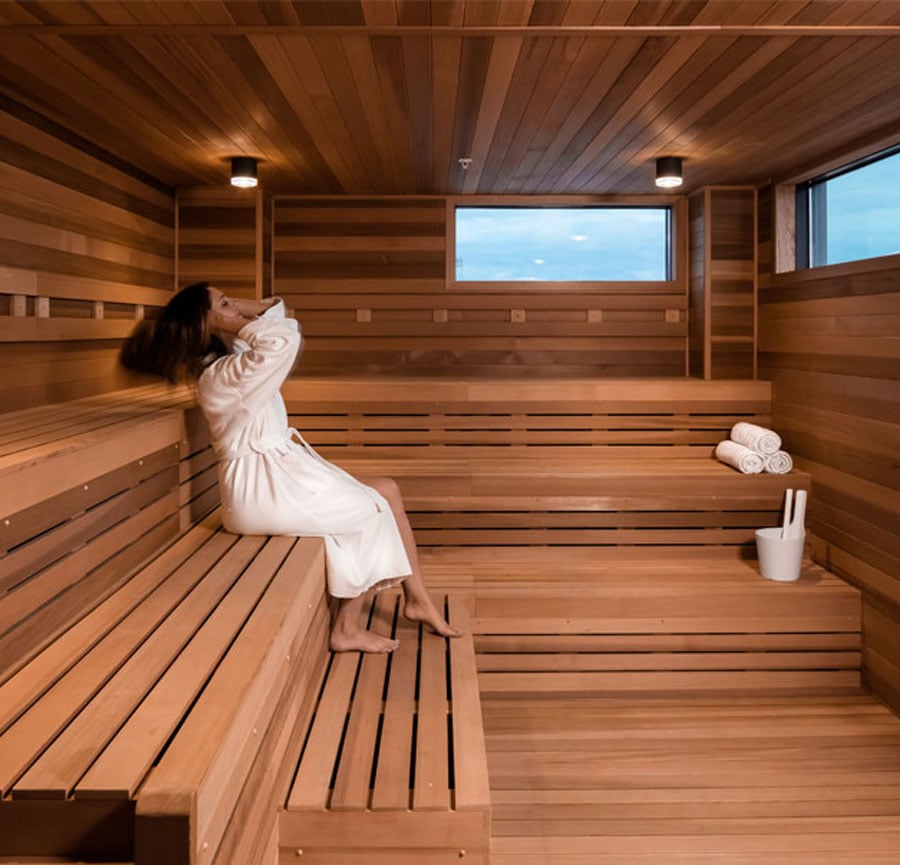Unknown Facts About Traditional Sauna
Unknown Facts About Traditional Sauna
Blog Article
The Only Guide for Traditional Sauna
Table of ContentsThe Only Guide to Traditional Sauna8 Easy Facts About Traditional Sauna DescribedThe Best Guide To Traditional SaunaLittle Known Questions About Traditional Sauna.Traditional Sauna Can Be Fun For Anyone
The majority of the weight shed in a sauna is water loss and is re-gained upon rehydrating. Without a doubt sauna can be a vital part of a healthy weight loss program. To consider the differences in between traditional and IR saunas, I will divide these into proven, academic, and made distinctions.Thus, the best point in the saunawhich goes to the ceiling directly above the sauna heateris commonly between 185 and 190 F. Claims that a conventional sauna surpasses 200 F is just not real and not applicable for electric saunas sold in the US. The temperature for a far-infrared sauna is typically established in between 120 and 140 F; however, unlike the conventional sauna, the objective in and IR space is not to accomplish a heat.
Due to the fact that of this, the temperature difference is almost unnecessary, since profuse sweating leads to both sauna kinds, but the approach of warming the body is various. In an IR sauna the bather will certainly feel warm and will sweat a lot, however at a lot reduced temperatures (Traditional Sauna). Thus, if the goal is to invest longer durations of time in the sauna, the IR sauna is a good selection
When a standard sauna has actually been effectively heated up, the sauna walls are warm, the air temperature level has attained established temperature and the rocks are incredibly heated. As an interesting side note, the heated walls and the rocks are producing far-infrared warm, integrated with the warmed air, to create an "wrapping up warm".
The Single Strategy To Use For Traditional Sauna

When the high temperature is achieved, the aspects cycle on and off to preserve the high temperature level. A lot of typical sauna individuals take pleasure in pouring water over the rocks to produce vapor to elevate sauna moisture degrees. The benefits of pouring water over the rocks include: making the space much more comfortable, moistening the nasal flows, and permitting the usage of aromatherapy by blending essential oils with the water.

When the power enters the body, it creates the body temperature to increase and ultimately causes sweating. In an infrared sauna it is essential for the emitters/heaters to remain on virtually regularly. Considering that there is no mass of rocks to preserve warmth, the sauna will cool down if the emitters shut down.
As discussed over, the sauna bather in an infrared space intends to position himself before running emitters to get optimal take advantage of the heat. The heating time for both areas can be extremely different, depending on how the rooms are used. For a typical sauna, a bather needs to enable 30-40 minutes for the space to attain a desired temperature and to correctly pre-heat the rocks.
Traditional Sauna - Truths
A well created sauna will usually attain a temperature level of 150-160 F in concerning 30-40 minutes. For hotter temperatures, the area might need to warmth for a longer duration.

Standard saunas have a tendency to be larger (thus use even more electrical energy) than infrared saunas, although standard saunas are definitely readily available in one and two individual dimensions also. For a two-person conventional sauna, 5x6 or 5x7 size is most popular. The leading bench can pleasantly seat 2 or three people and is also long sufficient to lie down throughout the sauna session.
The Ultimate Guide To Traditional Sauna
The average expense per kWH of electrical energy in the U.S. is approximately $0.11, so a 4.5 kW heater will set you back roughly $.50 to run for one hour, if the heating unit runs continuously for one hour. Typically a sauna heating unit will run for 75% of the very first hour and 50% of subsequent hours on given that the aspects cycle once the set temperature level is attained.

There is a rarely gone over difference in the social experience in between the two rooms. While our society has actually shed some of the social advantage of the traditional sauna experience, it can be really socially fulfilling (Traditional Sauna). From family time in the sauna, to heart-felt discussions with better halves, to sauna partiesthe traditional sauna experience can result in intimate mingling
The Best Guide To Traditional Sauna
A lot of greater end infrared rooms consist of colored light therapy, noise systems and full-glass fronts.
Report this page